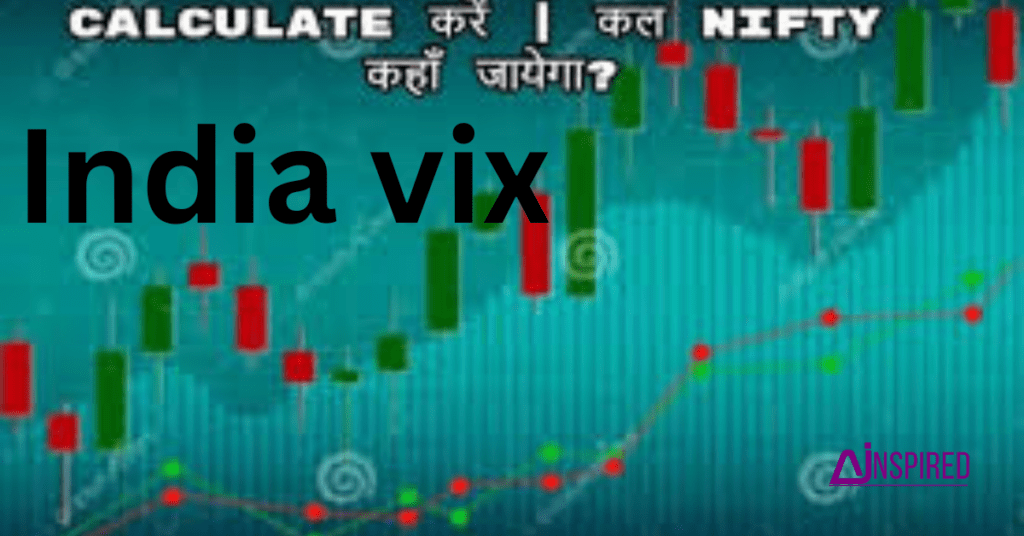India VIX
The India VIX, or the Volatility Index, is a measure of market expectations of near-term volatility in the Indian stock market. It is also known as the “fear gauge” because it tends to rise when investors are concerned about market uncertainty and potential downturns.

Here are some key points about the India VIX:
- Calculation: The India VIX is calculated based on the order book of the NIFTY index options. It uses the Black-Scholes model to estimate implied volatility. Implied volatility is a measure of how much the market expects the price of an asset to fluctuate in the future.
- Interpretation: A higher VIX value implies higher expected volatility, indicating that investors anticipate larger price swings in the stock market. Conversely, a lower VIX suggests lower expected volatility and a relatively stable market.
- Inverse Relationship with Market: The India VIX typically has an inverse relationship with the stock market. When the market is experiencing a downturn, the VIX tends to rise. Conversely, during periods of market stability or growth, the VIX tends to be lower.
- Historical Perspective: The India VIX was introduced by the National Stock Exchange (NSE) in 2008. It was modeled after the CBOE Volatility Index (VIX) in the United States, which serves a similar purpose.
- Uses:
- Risk Management: Investors and traders use the India VIX to gauge the level of risk and uncertainty in the market. It can be a valuable tool for making decisions about portfolio allocation and hedging strategies.
- Option Pricing: It is used in the pricing and valuation of options. Higher volatility tends to increase the premiums of options.
- Market Timing: Some traders use the VIX as an indicator for market timing. For example, a very low VIX might suggest that the market is complacent and due for a correction.
- Limitations:
- The India VIX is a forward-looking indicator based on market expectations. It doesn’t predict the direction of the market, only the level of volatility expected.
- It primarily reflects the sentiment of the options market and might not fully capture other market dynamics.
- Notable Events: The India VIX tends to spike during times of significant market events, such as financial crises, geopolitical tensions, or major policy announcements.
- Investor Awareness: It’s important for investors to be aware of the VIX and understand its implications, especially if they are involved in options trading or have a significant exposure to the stock market.
Remember that investing in the stock market involves risks, and it’s important to conduct thorough research and consider seeking advice from financial professionals before making investment decisions.
Key points
India Vix was introduced in 2008 by NSE.
- We can set the Range of nifty by seeing India VIX How much it can increase and how much it can decrease.
- When Market Increases Vix Decreases & When market Increase Vix will Come down.
- Vix is for Index and when it comes to Equity Options It is Implied Volatility.
INDIA VIX TODAY 12.99 (Annually)
THAT MEANS
Nifty can Increase 12.99% UP side also
OR
Nifty Can Reduce 12.99% Down side also
Example : Nifty is at 17450 x 12.99% = 2,266 Points up or Down Annually
So for Annually The Target is 2,226 up or Down Probality
But for Monthly , Weekly and Daily how to set the target?
Months = 12 Months so √12 = 3.4641
Weeks = 52 Weeks √52
Days = 365 Days √365
So for Annually 12.99%
1 Month : 12.99/3.4641 =3.70% Up or Down ( i.e) Nifty is at 17450 x 3.70% = 645.65
Points up or Down Annually
1 Week = 12.99/7.21 = 1.80% Up or Down ( i.e) Nifty is at 17450 x 1.80% = 314.10
Points up or Down Annually
1 Day =12.99/19.10= 0.68% up or Down ( i.e) Nifty is at 17450 x 0.68% = 118.66
Points up or Down Annually
FAQs
- What is India VIX?
- India VIX is a measure of market volatility. It represents the market’s expectation of volatility over the next 30 calendar days. It is derived from the implied volatility of the NIFTY index options.
- How is India VIX calculated?
- India VIX is calculated based on the weighted average of the out-of-the-money call and put options of the NIFTY index. It uses a mathematical formula to compute implied volatility.
- Why is India VIX important?
- India VIX is important because it helps investors and traders assess the level of risk and uncertainty in the market. A high VIX indicates higher expected volatility, while a low VIX suggests lower expected volatility.
- How can investors use India VIX?
- Investors can use India VIX to make informed decisions about their investment strategies. For example, during high VIX periods, they might consider using options or other hedging strategies to protect their portfolios from large market swings.

